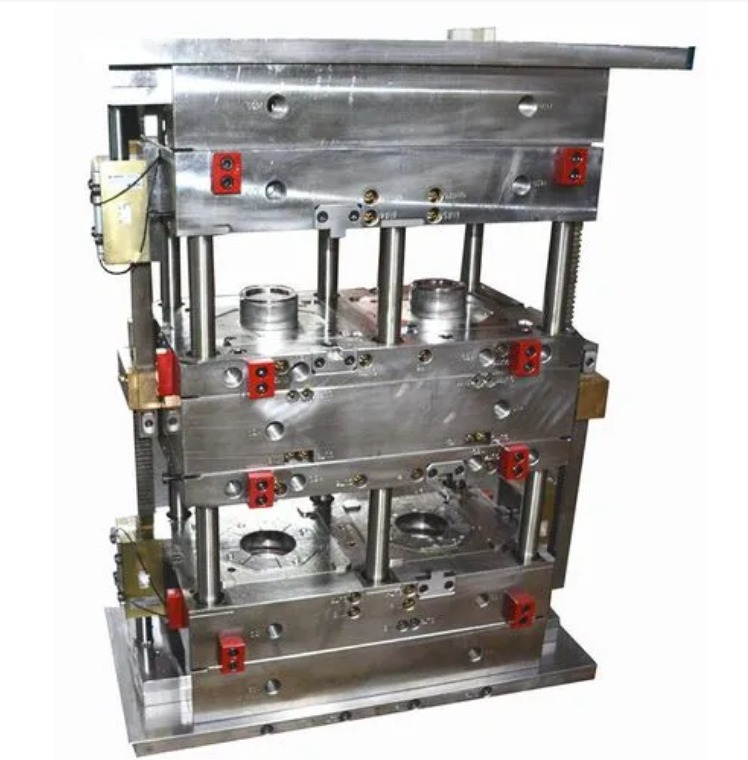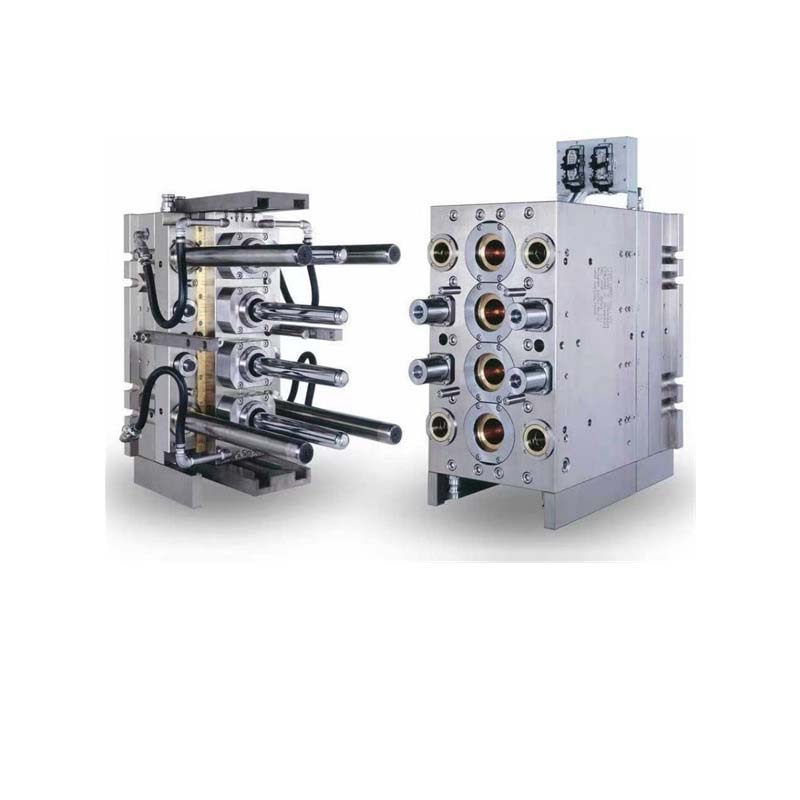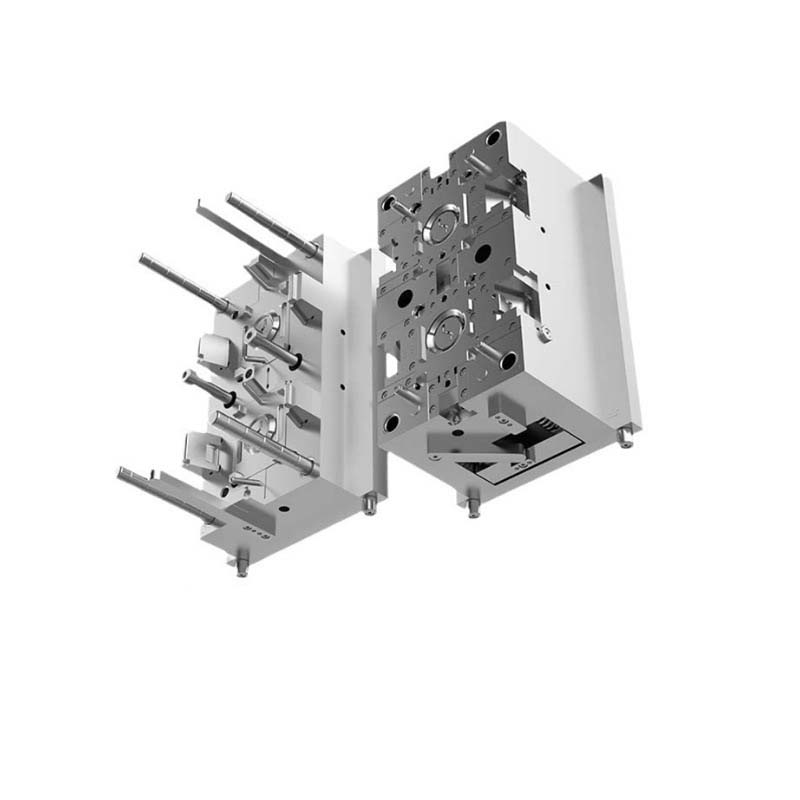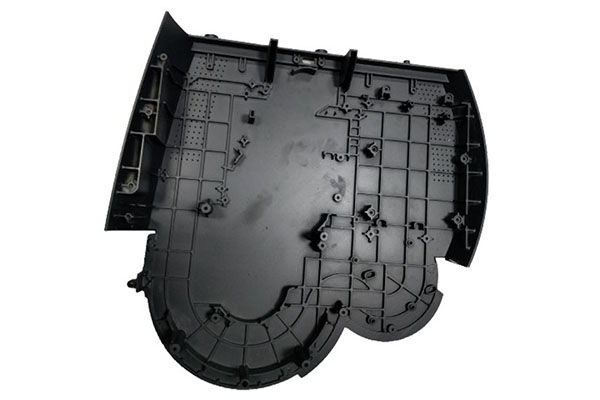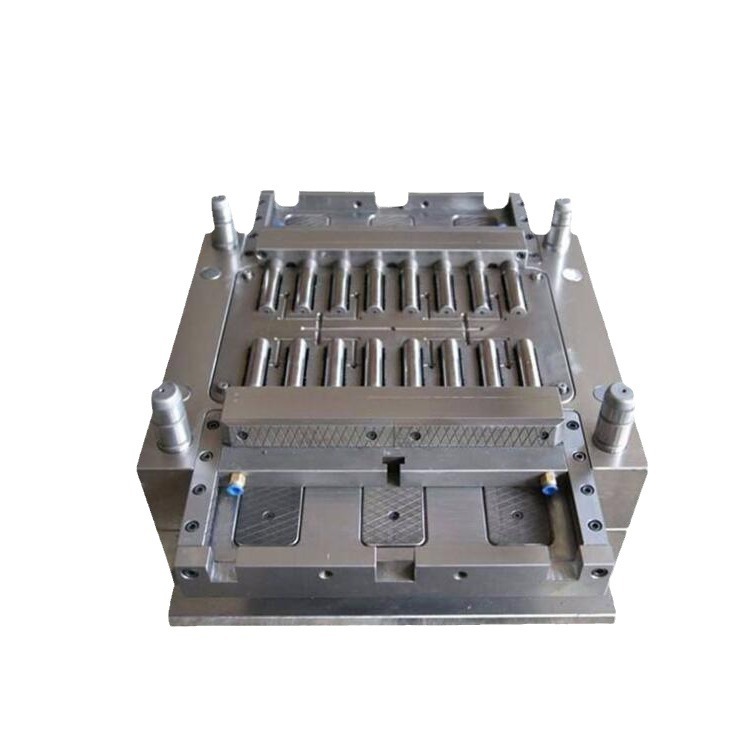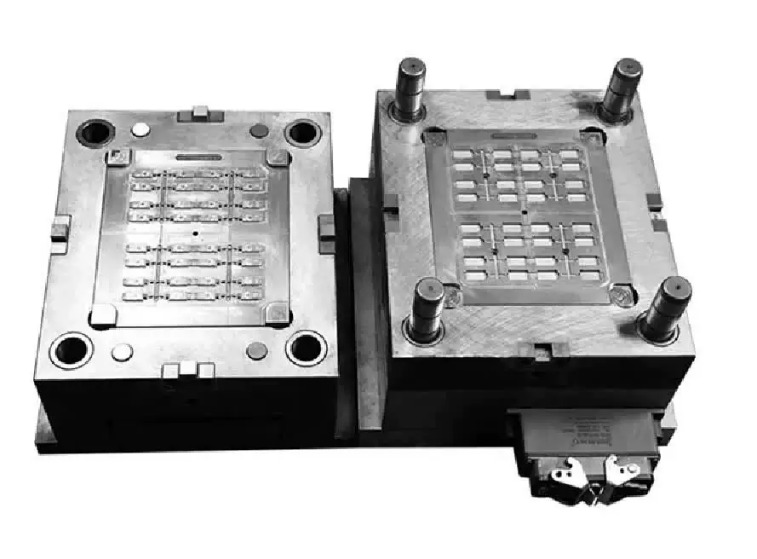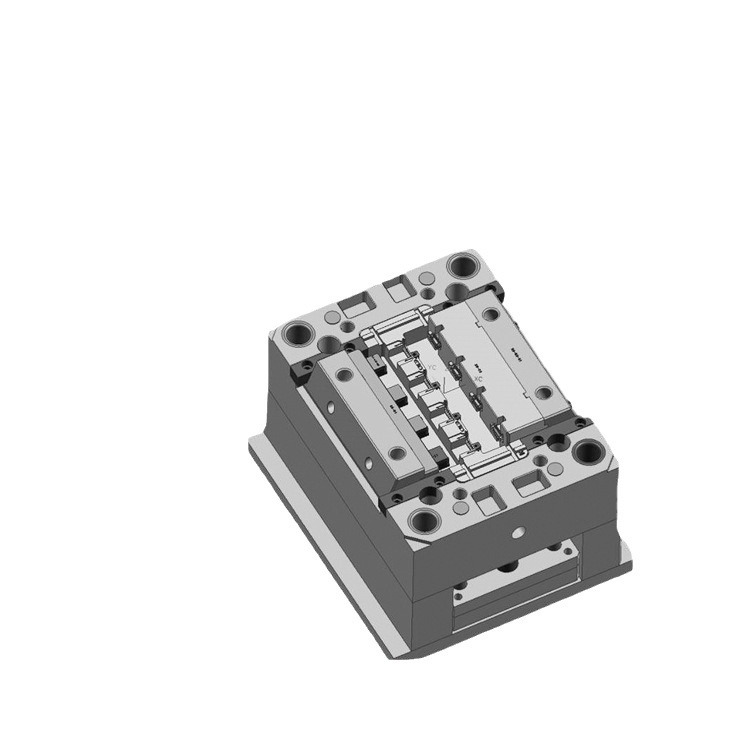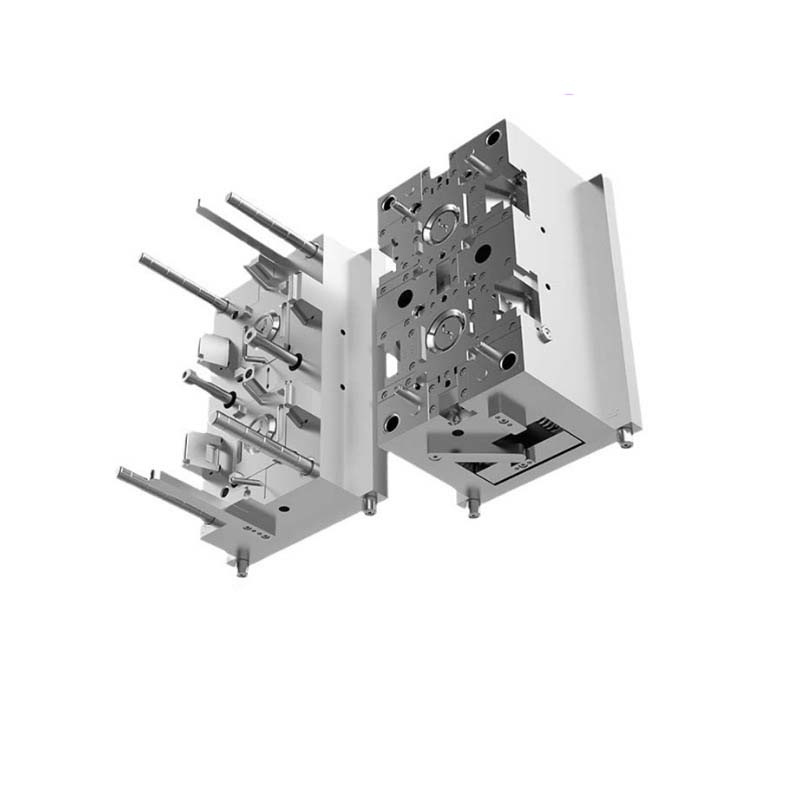Introduction
What is a Two Plate Injection Mould?
A Two Plate Injection Mould, also known as a single - parting - surface injection mould, is one of the most fundamental and widely used types in plastic injection moulding. It consists of two main parts: the fixed mould (also called the stationary mould or the A - plate) and the moving mould (also known as the movable mould or the B - plate).
The fixed mould is attached to the stationary platen of the injection moulding machine. It typically contains the sprue bush, which is the channel through which the molten plastic enters the mould. The sprue bush is connected to the injection nozzle of the machine. In addition, the fixed mould may house the cavity inserts. These inserts are the negative impressions of the desired plastic part. For example, if you are manufacturing a plastic toy car, the cavity inserts in the fixed mould would have the shape of the outer body of the toy car.
The moving mould, on the other hand, is connected to the movable platen of the injection moulding machine. It has several important components. The core inserts are located in the moving mould. These inserts form the internal features of the plastic part. For the toy car example, the core inserts could form the hollow interior of the car or any internal structures like seats. The moving mould also has a system for ejecting the finished plastic part after the moulding process is complete. This usually includes ejector pins, which push the part out of the mould when it is opened.
When the injection moulding process begins, the two plates are closed together. Molten plastic is injected through the sprue bush and flows into the cavities formed by the cavity and core inserts. After the plastic cools and solidifies, the moving mould is separated from the fixed mould. The finished plastic part, along with any runner and gate systems (the channels that carried the plastic to the cavities), remains on the moving mould side. Then, the ejector pins push the part out, and the cycle can start again for the next part production.
How Two Plate Injection Mould Solves Production Problems
Precision in Moulding
The precision of a two - plate injection mould is one of its key selling points. Firstly, in terms of manufacturing precision, modern machining technologies such as Computer Numerical Control (CNC) machining are widely used in the production of two - plate injection moulds. CNC machines can achieve extremely high - dimensional accuracy, with tolerances often within the range of ±0.01 - 0.05 mm. This high - precision manufacturing ensures that the cavity and core inserts in the mould, which form the plastic part, have the exact dimensions required for the final product.
Secondly, the design of the two - plate injection mould contributes to high - precision moulding. The parting surface between the fixed and moving moulds is designed to be as flat and smooth as possible. A well - designed parting surface reduces the chance of flash (excess plastic that seeps out between the mould plates) formation, which can affect the dimensional accuracy and surface quality of the plastic part. For example, when manufacturing small plastic gears, the precise alignment of the cavity and core inserts in the two - plate mould ensures that the teeth of the gears are formed with the correct pitch and shape, resulting in high - quality gears that can function properly in mechanical assemblies.
Moreover, the use of high - quality mould materials also plays a role in precision moulding. Materials like P20 steel, which has good machinability and stability, are commonly used. These materials can maintain their shape and dimensional accuracy even under the high - pressure and high - temperature conditions during the injection moulding process, ensuring consistent precision in part production.
High - Volume Production Capability
Two - plate injection moulds are well - suited for high - volume production. Their durability is a significant factor. High - quality steel materials are often used in the construction of the mould plates, cavity inserts, and other components. For instance, moulds made from hardened steel can withstand hundreds of thousands or even millions of injection cycles without significant wear or deformation. Some industrial - grade two - plate injection moulds are designed to last for over 500,000 cycles, which is crucial for long - term, large - scale production runs.
The simplicity of the two - plate injection mould design also contributes to its high - volume production capabilities. With only two main plates, the mould has fewer moving parts compared to more complex mould types. Fewer moving parts mean less chance of mechanical failures during the injection moulding process. This reliability allows for continuous, long - term operation of the injection moulding machine. In a factory setting, a two - plate injection mould can run continuously for 24 hours a day, with only brief maintenance breaks, significantly increasing the production output.
In addition, the relatively short cycle time of two - plate injection moulds further boosts production efficiency. The process of opening and closing the mould, injecting the plastic, and ejecting the finished part can be completed quickly. On average, the cycle time for a two - plate injection mould can be as short as 10 - 30 seconds, depending on the complexity and size of the plastic part. This fast cycle time enables manufacturers to produce a large number of plastic parts in a short period, meeting the demands of high - volume production orders.
Versatility in Plastic Part Design
One of the great advantages of two - plate injection moulds is their versatility in handling different plastic part designs. They can accommodate plastic parts of various shapes. Whether it is a simple, geometrically - shaped part like a plastic box or a more complex part with undercuts and intricate details, two - plate injection moulds can be designed to produce them. For parts with undercuts, side - action mechanisms can be incorporated into the moving mould. These mechanisms use slides or cams to create the undercut features during the moulding process.
In terms of size, two - plate injection moulds can be scaled to produce both small and large plastic parts. Small - scale two - plate injection moulds can be used to manufacture tiny components such as electronic connectors, while large - scale moulds can produce large plastic parts like automotive bumpers. The flexibility in size is achieved through the modular design of the mould components. Different cavity and core inserts can be designed and installed into the mould plates according to the size requirements of the plastic part.
Furthermore, two - plate injection moulds can handle plastic parts with different levels of complexity. From single - cavity moulds for simple parts to multi - cavity moulds for more complex or high - volume production, the design can be adjusted accordingly. Multi - cavity two - plate injection moulds can have anywhere from 2 to hundreds of cavities, allowing for the simultaneous production of multiple identical plastic parts in a single injection cycle, which is highly efficient for mass - producing parts like plastic bottle caps or small consumer goods components.
Comparison with Other Mould Types (Table/List)
Cost Comparison
When considering the cost - effectiveness of a two - plate injection mould, it is essential to compare it with other mould types, such as the three - plate injection mould. The following table outlines the cost differences between the two:
| Cost Aspect | Two - Plate Injection Mould | Three - Plate Injection Mould |
| Initial Investment | Lower. Due to its simpler structure with only two main plates, the material and manufacturing costs are reduced. For example, a small - scale two - plate injection mould for producing plastic bottle caps may cost around \(5,000 - \)10,000. | Higher. The additional third plate (the runner plate) and more complex mechanisms lead to increased material and machining costs. A similar three - plate mould for the same plastic bottle caps might cost \(8,000 - \)15,000. |
| Operation Cost | Lower energy consumption as it generally has a shorter cycle time. Also, the maintenance cost is relatively low because of its simple structure. The annual maintenance cost for a two - plate mould in a medium - scale production line could be around \(1,000 - \)3,000. | Higher energy consumption due to a longer cycle time in some cases. The complex structure requires more frequent maintenance and more skilled technicians, increasing the maintenance cost. The annual maintenance cost for a three - plate mould in a similar production line may be \(3,000 - \)5,000. |
| Material Cost | May have more material waste due to the use of side or direct gates, which can result in larger runner systems. | Less material waste as it often uses point gates, which can be precisely located, reducing the size of the runner system. However, the higher initial investment may offset some of the material cost savings in the short - term. |
Performance Comparison
In addition to cost, the performance of different mould types also varies significantly. Here is a comparison between two - plate and three - plate injection moulds in terms of performance:
| Performance Aspect | Two - Plate Injection Mould | Three - Plate Injection Mould |
| Moulding Precision | High, with dimensional tolerances typically within ±0.01 - 0.05 mm. However, for extremely complex parts with high - precision surface requirements, it may have limitations. | Higher precision can be achieved, especially for parts with complex geometries and strict surface finish requirements. The ability to precisely control the gate location helps in minimizing warping and ensuring better dimensional accuracy. |
| Production Efficiency | High production efficiency with a short cycle time, usually 10 - 30 seconds per cycle depending on the part complexity. This makes it suitable for high - volume production. | The cycle time is generally longer, usually 15 - 40 seconds per cycle, due to the more complex opening and closing process and the need to separate the runner and gate systems more carefully. This reduces the overall production efficiency for high - volume production. |
| Applicable Product Types | Ideal for simple - shaped plastic parts such as plastic boxes, basic plastic toys, and simple consumer goods components. It can also handle some parts with undercuts with the help of side - action mechanisms. | Suited for complex - shaped parts, parts with multiple cavities, and parts that require precise gate placement, such as medical device components, automotive interior parts with complex geometries, and high - end consumer electronics housings. |
Yigu Technology's View
As a non - standard plastic metal products custom Supplier, Yigu Technology highly values the two - plate injection mould in plastic part production. Our experience shows that the simplicity of two - plate injection moulds is a great advantage. It allows for faster design and manufacturing cycles, reducing the time from product concept to production.
In terms of cost - effectiveness, we have found that two - plate injection moulds are more budget - friendly for our clients, especially for large - scale production orders. Their relatively low initial investment and maintenance costs make them an attractive option. Also, the high - volume production capability of two - plate injection moulds aligns well with our production capacity, enabling us to meet tight deadlines for clients. We have successfully used two - plate injection moulds to produce a wide range of plastic parts, from consumer goods components to industrial parts, with consistent quality and high efficiency.
FAQ
What are the main factors affecting the cost of a two - plate injection mould?
The main factors include the type of mould materials. High - quality steel like P20 or H13 will cost more than common materials. Larger mould sizes mean more material consumption and longer machining time, thus increasing the cost. The complexity of the mould, such as the presence of intricate cavities, cores, or side - action mechanisms, also raises the manufacturing cost. Additionally, the number of cavities in the mould and the expected production volume can influence the cost - if a high - volume production is required, the mould may need to be more durable, which can increase its cost.
How to maintain a two - plate injection mould to ensure its long - term cost - effectiveness?
Regular maintenance is crucial. Clean the mould thoroughly after each production cycle to remove any plastic residue, which can corrode the mould over time. Lubricate the moving parts, such as ejector pins and guide rails, regularly with suitable lubricants to reduce friction and wear. Check the components for any signs of wear, deformation, or damage, and replace the damaged parts promptly. Also, ensure that the cooling channels are free from blockages and clean to maintain efficient heat dissipation during the injection moulding process.
Can two - plate injection moulds be used for complex plastic part designs?
Yes, although two - plate injection moulds have a relatively simple structure, they can be used for complex plastic part designs. For parts with undercuts, side - action mechanisms like slides or cams can be added to the moving mould. By carefully designing the cavity and core inserts, and making appropriate adjustments to the injection process parameters such as temperature, pressure, and injection speed, two - plate injection moulds can successfully produce complex plastic parts. However, for extremely complex parts with high - precision surface requirements and complex internal structures, more complex mould types might be a better choice.
